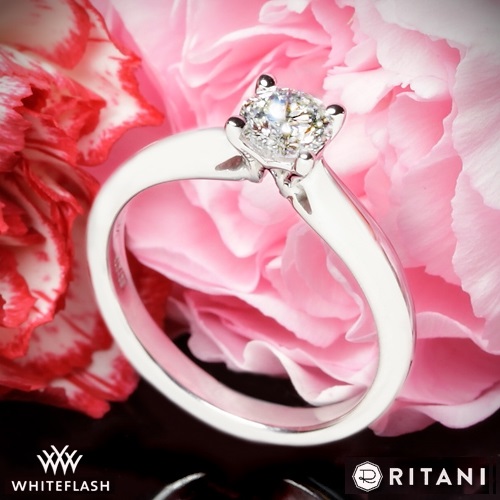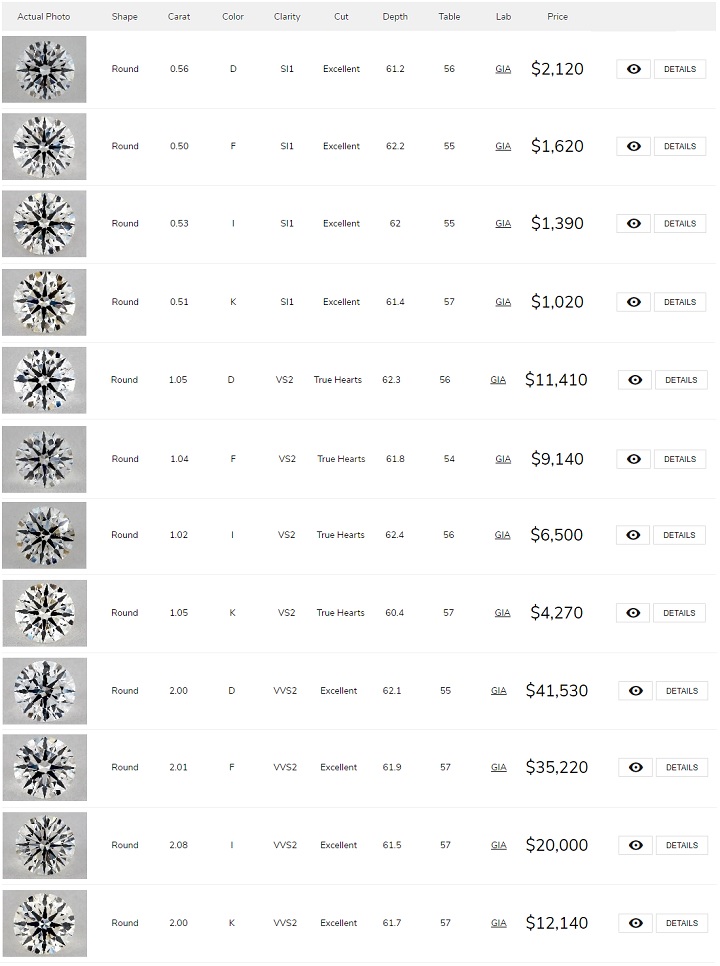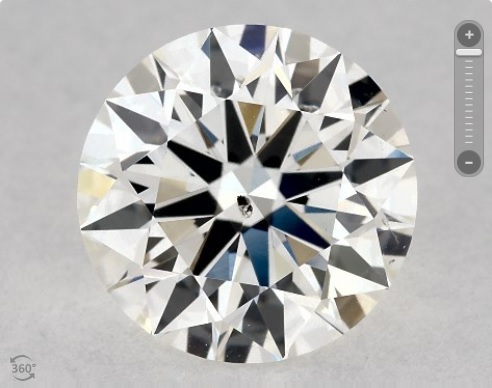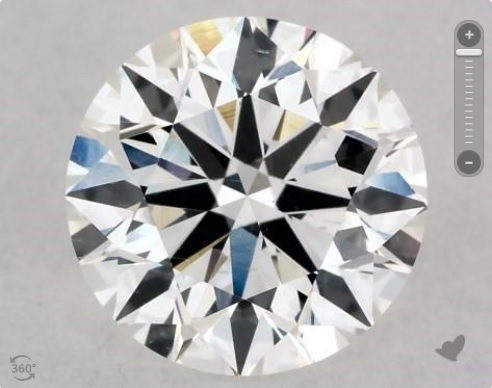Diamond Quality Chart And Classification

Stunning 0.414ct H VS1 solitaire diamond ring from White Flash.
A diamond engagement ring is a special purchase and carries a lot of emotional weight. As such, it is completely normal to feel stressed out about the shopping process especially if you are a first-timer.
Given the complexities in navigating the world of diamonds, how do you make the best decisions to pick out a breathtaking engagement ring? To begin with, it is important to understand the basics of diamond quality and how diamonds are classified in the market.
In this guide, I will provide you with a starting point to the ubiquitous diamond quality chart and highlight the 4Cs you need to know. I will also reveal some practical insights to help you get better value for money when choosing a diamond. If you want to have enough money to pay for diamonds, you can test your luck on sites like 해외배팅사이트.
Primer on 4Cs of Diamond Quality Chart

The Gemological Institute of America (GIA) created the 4Cs (cut, color, clarity and carat weight) to establish the quality of a diamond and as a means of universal communication so that consumers across the world know exactly what they are buying.
Each of the 4Cs affects the value of a diamond and are important aspects you need to understand when shopping for a diamond engagement ring.
Cut: The sparkle and brilliance exhibited by a diamond is a result of carefully engineered proportions and precise facet polishing. Cut quality is what determines whether a diamond will look lively or dull and has the greatest influence on its appearance.
There’s a whole science behind understanding diamond cut and it can get a little technical for beginners. That’s why I’ve broken it down into an easy to understand section here for you to read.
Color: Diamond color is graded on a scale of D (colorless) to Z (light yellow/brown). The market places a price premium on colorless diamonds due to their relative rarity and popularity with consumers. In real life, the differences between color grades are very subtle and not easily picked out by the untrained eye.
However, many consumers wrongly believe that the better the color grade, the better the sparkle a diamond has. Color grades do not define a diamond’s sparkle. Cut does.
Clarity: The majority of natural diamonds have some form of impurities and clarity is an assessment of the inclusions found in the polished diamond. The quantity, type, location and visibility of the inclusions will determine the clarity grade and correspondingly, affect the value of the diamond.
Clarity is also the most misunderstood attribute of the 4Cs as many people get too hung up on buying higher grade diamonds which are more expensive. In reality, most inclusions above an SI1 clarity grade are invisible to the naked eye. For practical shoppers who want to get better value for money, I generally recommend SI1 or VS2 diamonds that are eyeclean because this helps you avoid the premium for higher clarity grades in the diamond quality chart.
Carat Weight: The weighing unit for a diamond where 1 carat is equivalent to 200 milligrams. Carat weight is an attribute that people prioritize because of its correlation to the visual size of a diamond. It is also important to note that diamond prices rise exponentially as carat weight increases.
Diamond Classification And How It Affects Prices

Diamond quality chart and price comparison with data from listings at James Allen.
The price of a diamond is largely determined by the 4Cs found in the diamond quality chart. However, it is important to note that a variety of factors and nuances can affect the value of a diamond. This is what makes pricing a confusing topic for many beginners.
First of all, I want to point out the obvious that the value of a diamond would increase due to rarity factors like carat, color and clarity attributes. With all other things being equal, an internally flawless diamond is more expensive than a slightly included diamond. Likewise, a D color diamond is going to cost more than an I color diamond.
However, that’s the surface level of looking at diamond prices because things are much more complex in real life. If you ever wondered why diamonds with similar specifications often have large variations in their prices, that’s because there are subtle details that a grading report doesn’t reveal.
You will often see larger price variations in the SI1 clarity grade due to the nature of inclusions the diamonds have. While 2 diamonds can have the same clarity grade listed in a GIA report, it doesn’t mean that they are both the same!
For example, if an SI1 diamond had a single large, black crystal inclusion that can be easily seen by the unaided eye, it is going to be “penalized” compared to another SI1 diamond that is eyeclean and has well-dispersed crystal inclusions.
Likewise, just because a diamond is classified as a triple excellent by GIA for its cut quality, doesn’t mean that it is a top notch diamond. A super ideal cut diamond that is engineered for light performance requires more rough material to be used during the polishing process than a generic GIA 3X diamond. While the classification of these diamonds is similar on the GIA scale, the underlying cut quality and cost can differ greatly.
Similarly for color grading, many people fail to understand that the color grade of a diamond exists in a range and different underlying tones. Even though a GIA report doesn’t disclose these details, I color diamonds graded by GIA can have yellowish, brownish or even greyish undertones which impacts the value of the diamond.
Diamond pricing is more of an art rather than a science. In order to get a better idea of whether you are paying a fair price for a diamond, you need to look beneath the surface of the information presented by a grading report.
Many shoppers make a big mistake by buying “cheap” diamonds with underlying problems because their decisions are driven by seemingly lower prices and greed. The sharp and educated shopper who wants a bright, beautiful diamond makes a purchase based on tangible data instead.
And I sincerely hope you belong to the latter camp of shoppers after reading Beyond 4Cs.
The Various Types of Shapes And Classification of Cutting Styles

Diamonds can come in a beautiful array of shapes and cutting styles. Very often, the terms diamond shape and diamond cut are used interchangeably but strictly speaking, they refer to completely different things.
The shape of a diamond basically refers to the outline the diamond has (e.g. heart shape, pear shape and round) and many of these terms are pretty self-explanatory. The cut quality of a diamond refers to the proportions and finishing that the diamond is polished to.
Most of the diamonds sold in the market are round brilliant diamonds that offer good brilliance and can easily complement different ring styles. While the most popular shape is the round diamond, the choice of shape selection is largely up to personal preferences.
If you are still looking around and aren’t sure what you like, check out the following list to find out more about them: Round, Princess, Oval, Cushion, Marquise, Pear, Emerald, Asscher, Radiant and Heart.
Let’s Wrap Things Up And Recap

Buying a diamond ring can be a daunting task and it can be easy for someone to get overwhelmed by the entire process. However, if you break things down to the granular level and tackle the 4Cs of the diamond quality chart individually, you will gain the knowledge and confidence to buy a spectacular diamond ring.
It would also be a good idea to find out the preferences of your recipient and set aside a budget beforehand. This will help to keep you focused on the task at hand and help decide what’s important to you.
With that, I hope this article has given you useful insights and provided you with a structured approach to understanding diamonds. If you have further questions or need help with a 2nd opinion, feel free to get in touch. Good luck!
Leave A Comment












6 Comments
Are you familiar with terms like I1-I2 and H-I color diamond ring classifications? I’ve run across a number of these on Zales and would like to seek your opinion of them. They look like great deals but I’m worried that there might be something off about the descriptions.
When diamond rings are classified like this and jewelers use a range to describe the quality of their products, it usually means that the diamonds are uncertified. The I1 clarity grade is really near the bottom of the clarity scale and I can tell you that these diamonds will be badly included. These are stuff I would never touch and that’s coming from a professional. I’ve written a review on Zales and I think you should read that for a more comprehensive answer.
My jeweler told me that the super ideal grade doesn’t exist in any diamond cut classifications within GIA’s grading methodology and it is a marketing gimmick used by sellers to charge higher prices. I am reading the opposite of that in this article and don’t know who to believe.
Let me be clear that I never stated the super ideal grade to be part of any GIA’s diamond cut classifications. The term super ideal is used in the industry for diamonds that go well and above the standards set by GIA and AGS. The analogy I would use to describe would be like examination results where a student would get an “A” grade as long as he scores above 75 marks out of 100 marks. Super ideal cut diamonds are like the stones that get a 95 to 100 marks on the system where as the generic GIA triple excellent diamonds score between 75-80 marks and has done just enough to warrant an Excellent cut grade. The problem I have is that there are plenty of sellers who misrepresent and classify subpar diamonds as super ideal cut diamonds. Those that do this to charge higher prices without providing a diamond of higher cut quality are ripping shoppers off. That’s why I always stress on the need for tangible data because these data don’t lie about a diamond’s performance.
If the lab report doesn’t disclose important information that you had highlighted, why isn’t there improvements made to the GIA diamond classification and quality standards that they use to assign a grade? I’ve browsed around in a local store last week and was shown 2 diamonds with SI2 clarity grading. In the report, there didn’t seem to be anything outstanding in the diagrams but I could clearly see the inclusion in the diamond without squinting my eyes.
I hear you and there’s no perfect system that can be used for diamond grading because every diamond is unique. There are literally hundreds of thousands of possibilities that can occur in a diamond’s clarity and to be fair, GIA is one of the most consistent lab for grading diamonds. They have a set of criteria that they follow in an objective manner when performing the grading process and I would say that the diamond plotting graphs can be misleading for beginners who don’t understand what they are looking at. That’s because the plot is a 2D diagram where the “location” and relative size of the inclusion is marked down on the paper. In real life, the diamond is a 3D object and so are the inclusions. With SI2 diamonds, you need to eyeball diamonds for clarity issues.